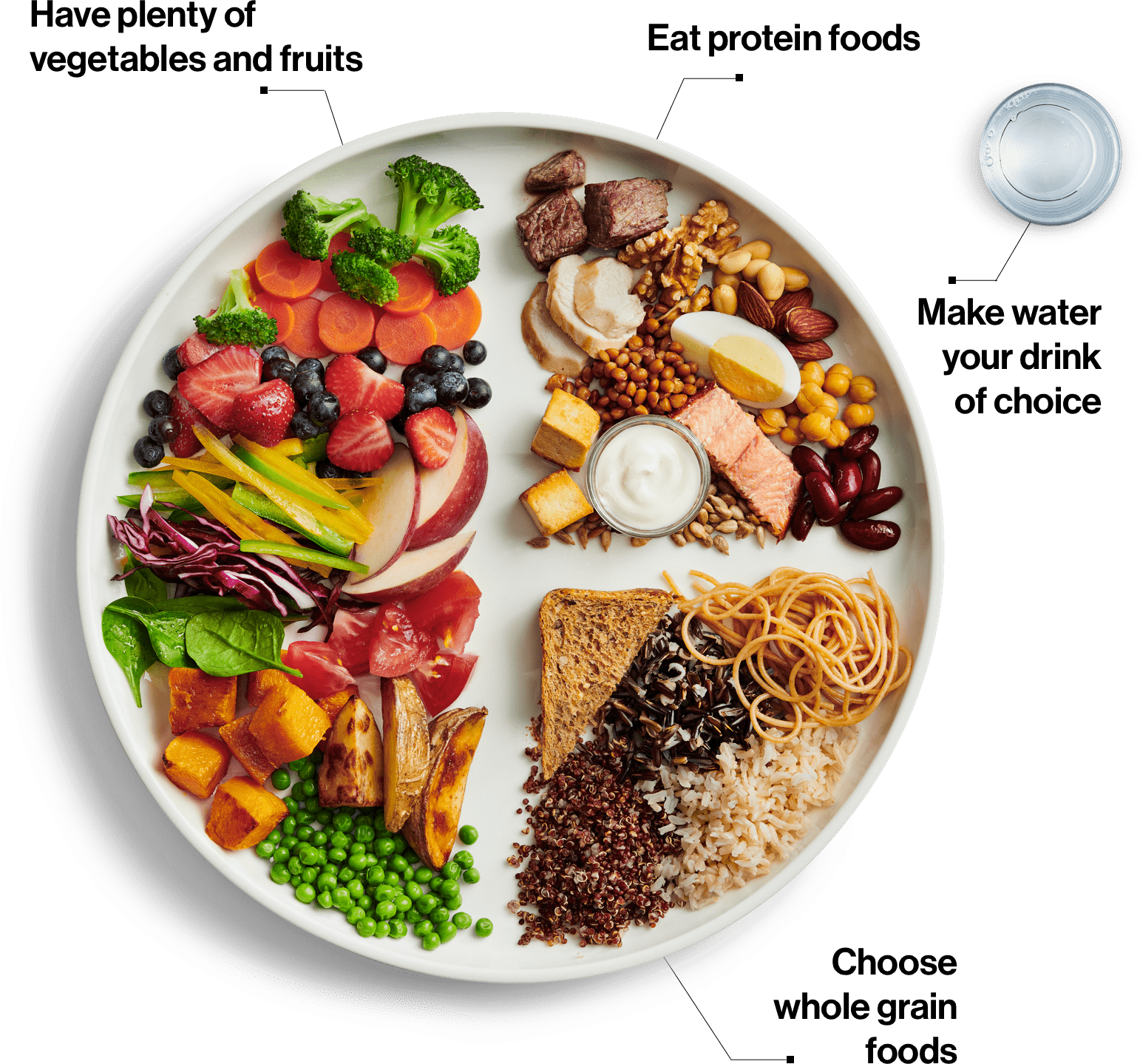
The ‘Eat Well Plate’
Balancing your plate is a great way to ensure that you are having a nutritious meal. Canada’s Food Guide recommends using the Eat Well Plate as a visual guide of a balanced meal to encourage people to eat plenty of vegetables and fruits, protein foods and whole grains. The image below is a visual representation to help you balance your meal. Half of your plate should contain vegetables and fruits, a quarter of your plate should be protein foods and a quarter of your plate should have whole grains.

Vegetables and Fruits
Having a wide variety of vegetables and fruits is important for meeting your nutrient requirements. Choosing various colours, textures, shapes, etc. helps to ensure that you are choosing a selection of different vegetables and fruits. It can sometimes be difficult to get children to try new foods and can even take up to 8-10 times of exposure before some kids will try certain foods, especially vegetables. Giving new vegetables and fruits to children as often as possible is very important for developing healthy eating habits, especially from a young age.
Protein Foods
There are a variety of different protein foods, such as poultry, beans, lean meats, cheese, fish, tofu, eggs, etc. Protein foods are essential to help build and repair muscles. Choosing different proteins ensure that you are getting a variety of nutrients. Canada’s Food Guide recommends choosing protein foods from plants more often. These foods tend to be higher in fibre and lower in saturated fat compared to other protein foods. Including fish with omega-3 fatty acids is also beneficial for both adults and children. Fish is a good source of protein, iron and vitamin D, which are all very important for proper growth and development.
Whole Grains
Carbohydrates provide energy for our bodies and are an important part of a healthy diet. Whole grains, such as quinoa, whole wheat bread, brown rice, oats, etc., have all three parts of the grain present (the bran, germ and endosperm). Having all three layers present makes whole grains more nutrient dense with more fibre, unsaturated fats and vitamins and minerals compared to refined grains.
